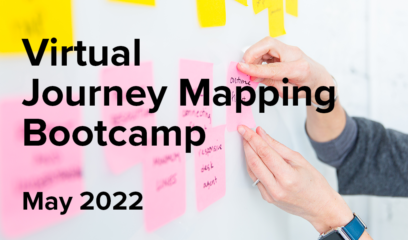In my last post, I mentioned that some of my early journey mapping clients were investment firms that wanted to map journeys like “saving for retirement” or “building financial wealth.” These journeys were of obvious importance to my clients: By understanding customers’ mindsets and needs along the way, they could help them save more and invest better—benefitting both customers and the business.
The problem is that journeys like this take place over the course of years—or even decades—and customers’ memories are short. You can’t ask someone nearing retirement age to map out their entire “savings” journey or to tell you what they were thinking when they first started putting money away. They’re likely to leave out key activities and smooth over past emotions. And even if they could recount every factor in exacting detail, the context in which they made decisions 40 years ago probably isn’t super relevant to your business today.
So should you even bother mapping long, amorphous journeys?
If you’re just starting out with journey mapping, I recommend that you tackle a more concrete customer goal that takes place over days, weeks, or months. But once you’ve gotten comfortable with the basics of journey mapping, you can (and, depending on your business, should) move on to tackling these tougher journeys. Here’s how:
- Identify the probable start and end points. You might presume that a goal like saving for retirement starts with people’s first jobs. And the end point might be someone’s last day of work—or perhaps the end of their retirement. (Yeah, I’m talking about death.) Of course, you’ll want to validate with customers what they think the start and end points are.
- Identify the triggers in between. Many long journeys seem to run in the background of people’s lives, but occasional circumstances trigger actions that bring your organization into the forefront. Such triggers include life stages (like getting married or having a child), external events (like a hurricane or stock market crash), or communications (like notification of an unpaid bill). Again, validate these triggers with your employees and customers to ensure you haven’t overlooked anything.
- Conduct customer research at the start, end, and trigger points. Once you’ve codified the key points of the journey, you’ll need to identify customers who have gone through each trigger recently to ensure that the experience will be fresh in their mind. Look for people who have contacted your support center about a particular issue. Or look for behaviors—like opening an account or adding a beneficiary—that might indicate a life stage event.
- Stitch together the individual journeys. For this type of journey, you won’t be able to create a complete end-to-end map for any single group of customers that you interview. But by talking with a set of customers who have gone through each of the key stages recently, you’ll be able to form a composite view that represents customers’ current pain points and needs across the years.




